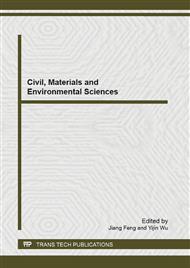p.304
p.310
p.317
p.323
p.327
p.331
p.337
p.341
p.346
Arsenic Release from Highly Contaminated Sediment during Resuspesion
Abstract:
Arsenic release mediated by biotic and abiotic activities from sediment during resuspension was investigated in laboratory. The results showed that arsenic was released strongly during resuspension, indicating highly contaminated sediment disturbed by wave or anthropogenic process may lead to strong arsenic release and threaten the local aquatic environment. Combine with change of solid species, we can conclude that oxidation of arsenic sulfides primarily contributed to arsenic release to the aqueous phase. Arsenic release was significantly accelerated by aerobic bacteria compared with uninoculated systems, suggesting biotic oxidation of arsenic sulfides may be the dominant mechanism responsible for partition of arsenic between solid and aqueous phase during resuspension.
Info:
Periodical:
Pages:
327-330
Citation:
Online since:
August 2013
Authors:
Price:
Сopyright:
© 2013 Trans Tech Publications Ltd. All Rights Reserved
Share:
Citation:


